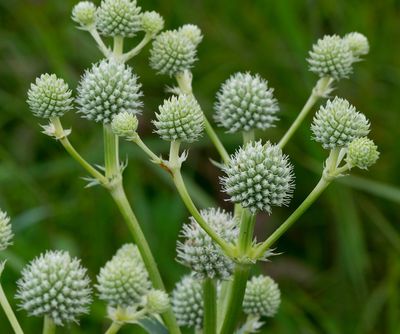Top Plants for South Central Gardens
When looking for tried and true plants for South Central gardens, don’t forget to include plants native to this gardening region. Native plants are acclimated to the region and require less water and nutrients than non-native plants. They are easy to find in native plant nurseries or by mail order. Before purchasing plants, know the United States Department of Agriculture’s plant hardiness zone for your area, and check the plant tags for the hardiness zone. The hardiness zones show the minimum temperatures plants can tolerate for each climate zone. The tag also shows the type of light the plant needs for optimal performance – full sun, shade, or part shade. Here is a list of native and non-native plants suitable for South Central gardens.
Annuals
Firebush (Hamelia patens)
Indian paintbrush (Castilleja indivisia)
Mexican zinnia (Zinnia angustifolia)
Summer snapdragon (Angelonia angustifolia)
Yellow bells (Tecoma stans)
Wax begonia (Begonia spp.).
Perennials
Autumn sage (Salvia greggii)
Butterfly weed (Asclepias tuberosa)
Daylily (Hemerocallis spp.)
Iris (Iris spp.)
Hens and chicks (Sempervivum spp.)
Indian pink (Spigelia marilandica)
Lenten rose (Helleborus orientalis)
Mexican hat (Ratibida columnifera)
Purple coneflower (Echinacea purpurea)
Rattlesnake master (Eryngium yuccifolium)
Red Texas star (Ipomopsis rubra)
Red yucca (Hesperaloe parviflora)
Groundcovers
Ajuga (Ajuga reptans)
Autumn fern (Dryopteris erythrosora)
Christmas fern (Polystichum acrostichoides)
Japanese painted fern (Athyrium nipponicum)
Liriope (Liriope muscari)
Pachysandra (Pachysandra terminalis)
Perennial plumbago (Ceratostigma plumbaginoides)
Grasses
Little bluestem (Schizachyrium scoparium)
Mexican feather grass (Nassella tenuissima)
Vines
Carolina Jessamine (Gelsemium sempervirens)
Clematis (Clematis spp.)
Crossvine (Bignonia capreolata)
Trumpet honeysuckle (Lonicera sempervirens)
Shrubs
Azalea (Rhododendron spp.)
Aucuba (Aucuba japonica)
Bigleaf hydrangea (Hydrangea macrophylla)
Blue mist shrub (Caryopteris x clandonensis)
Boxwood (Buxus microphylla)
Chinese fringe shrub (Loropetalum chinense)
Crape myrtle (Lagerstroemia indica)
Glossy abelia (Abelia grandiflora)
Indian hawthorn (Rhaphiolpis indica)
Japanese kerria (Kerria japonica)
Leatherleaf mahonia (Mahonia bealei)
Mugo pine (Pinus mugo)
Nandina dwarf varieties (Nandina domestica)
Oakleaf hydrangea (H. quercifolia)
Red-twig dogwood (Cornus sericea)
Shrub roses (Rosa spp.) — easy care varieties
Rose of Sharon (Hibiscus syriacus)
Smoke tree (Cotinus coggygria)
Trees
American holly (Ilex opaca)
Bald cypress (Taxodium distichum)
Chinese pistache (Pistacia chinensis)
Prairifire crabapple (Malus ‘Prairifire’)
Desert willow (Chilopsis linearis)
Ginkgo (Ginkgo biloba)
Kentucky coffeetree (Gymnocladus dioicus)
Lacebark elm (Ulmus parvifolia)
Loblolly pine (Pinus taeda)
Magnolia (Magnolia spp.) – such as Saucer magnolia or Star magnolia
Oaks (Quercus spp.) – such as Live oak, Willow oak, White oak
Oklahoma redbud (Cercis reniformis ‘Oklahoma’)
Red maple (Acer rubrum)
Southern sugar maple (Acer barbatum)
Tulip poplar (Liriodendron tulipifera)
Recommended plant lists also can be found at your local cooperative extension office or on its website.
